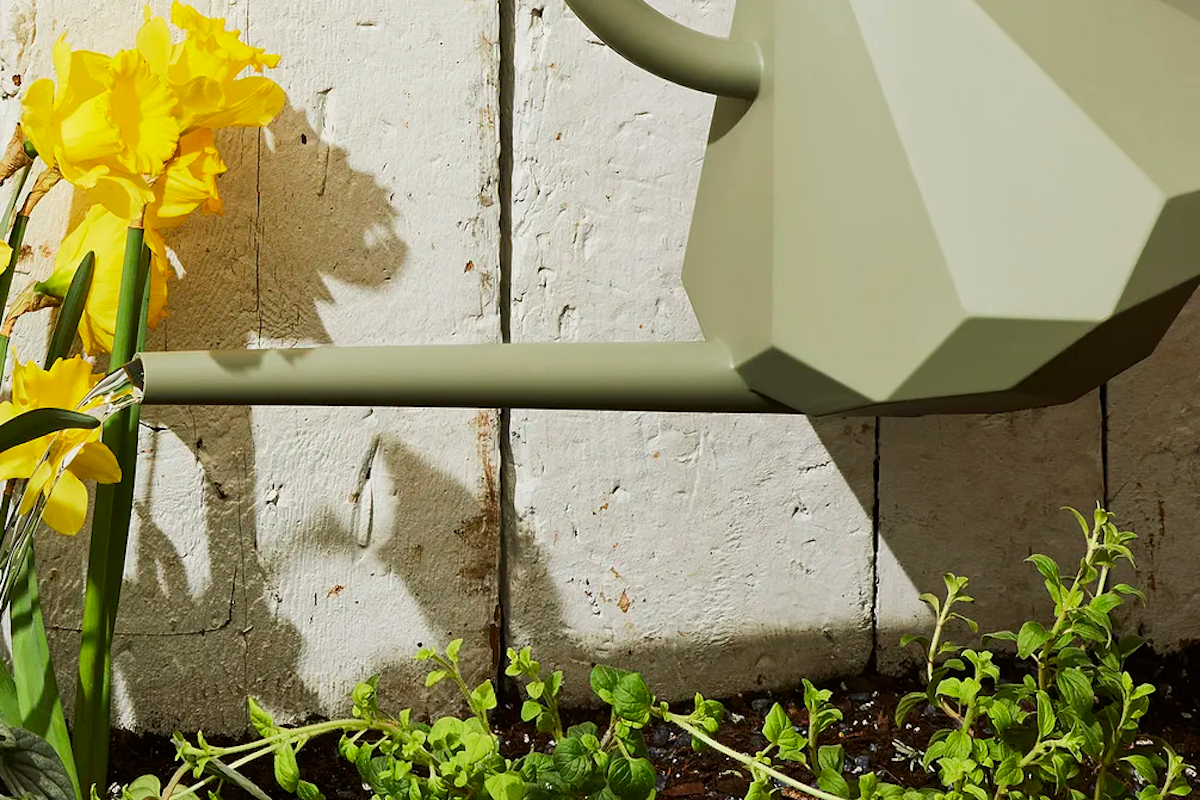A There are exceptions to the 2-inch rule though — sandy soil lets water run through much faster than heavier clay soil, so it needs more frequent watering to make up for the loss.
perfect amount of rainfall is every gardener's dream, but the reality is that almost every summer, there are stretches of hot, dry days when we need to water to keep our plants alive. The question of when it's the best time to water your garden goes hand in hand with the question of how to water. To help you get the most out of that precious H2O, here are some watering basics:
Why water is necessary
You'll recall from biology class that water is necessary for plants to perform photosynthesis — the process of transforming water into sugar and oxygen when the leaves are exposed to light. But water does more than that, it also transports nutrients inside the plant, so even in the richest of garden soils, plants will be undernourished if the water supply is insufficient.
How much water?
The basic rule is that your vegetable garden or raised beds needs an inch of rain every week. So for every 100 square feet, that translates into 62 gallons of rain. If it rained, but you don't have a rain gauge, or you're not sure how much it rained, check the local weather information.
Or, check whether the soil feels dry about two inches below the surface. If you mulched your plants, poke a hole in the mulch to get to the soil. Don't go by how the soil looks; instead, stick your index finger in it to feel whether it's dry. (This is one of the few gardening activities for which I don't wear gloves.)
When to water
The best time to water is early in the morning when it's still cool, which preps the plants for a hot day, but that's not always easy to accomplish with a busy schedule. The second-best time is late in the afternoon or early evening. Unless you're using drip irrigation or a garden hose (we tested the best ones here), watering in the late evening after dark is not a good idea, as the leaves won't be able to dry off, which can spread fungi (tomatoes are prime candidates for this).
Again, there are exceptions to the early morning and early evening watering rule. If your plants look wilted, they are under drought-stress. In this case, don't wait — water them right away, even if it's in the middle of a hot afternoon.
Hit the base
Always try to spray as little water on the leaves as possible and target the soil around the plant with your watering can or hose; don't shower the plants from above. If a plant has lush foliage, chances are that water will never reach the soil from overhead watering.
Overhead sprinklers also have no place in vegetable gardens, all they do is get the foliage wet instead of the soil, and most of the water evaporates. Dry irrigation and soaker hoses are ideal for vegetable gardens — and they help you save water. A watering wand attached to a hose is also great, as it reaches the base of the plant.
Keep a watchful eye on your container plants
Anything you grow in containers, even plants that naturally have low water needs, require more water and more frequent watering than plants in the ground. Pots, especially made of plastic, absorb and store heat and the soil dries out much faster than garden soil. That's why container plants need to be watered daily, even twice a day on hot days, until water drips out of the drain holes. Again, do the finger test to check whether it feels dry down to the second knuckle, and if it does, water right away.
Go into slow motion
When it hasn't rained and the soil or the mulch layer on top is very dry, you should water very little at first, using the nozzle of the watering can or a spray nozzle of a hose, until the top layer is soaked; otherwise, the water will just run off. Be patient, as it can take a few repetitions until you see the water disappearing into the soil.
Think deep
Plants in deeply watered soil develop stronger roots and are healthier overall. So the goal of watering is to get water to the roots of a plant, which is much better achieved by watering deeply and infrequently rather than superficially and often. The depth of plant roots varies but the general idea is to soak the soil to a depth of 5 to 6 inches, assuming that the soil has adequate drainage. Clay soil with poor drainage holds water and needs less water because overwatering can lead to root rot.
Plants that need extra TLC
Just because it hasn't rained for a while doesn't necessarily mean that you need to water anything and everything in your yard. The motto here is: Water as needed. If a plant, even an established one, looks wilted and under drought stress, it needs water.
However, there are some candidates that always need your special attention: Anything newly planted (whether it's a tree, a shrub, or a perennial) needs regular watering at least during the first year. In the absence of abundant rain, water it until the soil around the plant is well saturated.
Also, anything you have seeded needs to be kept consistently moist in order to germinate, whether it's the lettuce in your garden or raised bed or the wildflower seeds you scattered. Unless it rains every day, you need to water those daily, and very gently, so you don't wash out the seeds. Using a hose or a watering can fitted with a fine spray nozzle works best.


Shares